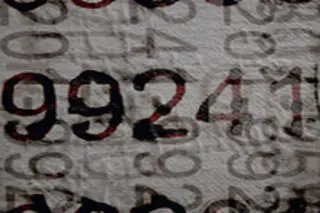Just a few hours ago, we reported that two political scientists from Columbia University analyzed the voting results released by the Iranian government, and that they found that there was only a 1 in 200 chance that a certain numerical pattern would occur in a clean election. Their analysis was based on examining the last digits of vote totals for each candidate from each province. We've recently learned that the chances that the election was not tampered with are even lower than the 0.5 percent the researchers reported in their Washington Post op-ed. That was thanks to an emailed tip from Douglas Keenan, a former Wall Street mathematical researcher and financial trader who now studies independently—a correction that was confirmed by the Columbia political scientists. Keenan found that there is only a .13 percent chance that, based on the numbers in question, Iran's election was not rigged—significantly lower than the ...
Update: Iran's Numbers Even Fishier Than Previously Reported
Analysis reveals a mere 0.13% probability that Iran's election was rigged, confirming suspicions of electoral manipulation.
More on Discover
Stay Curious
SubscribeTo The Magazine
Save up to 40% off the cover price when you subscribe to Discover magazine.
Subscribe













